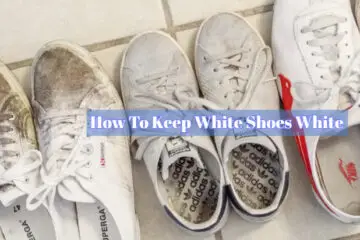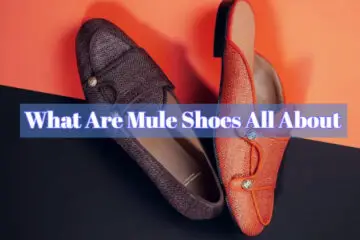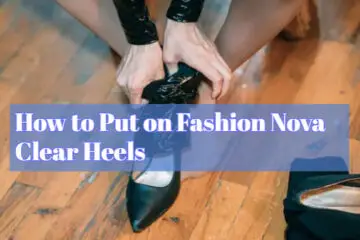We’ve all been there. You just got an exciting new pair of shoes – maybe some stylish boots or your favourite sneakers. You eagerly slip them on, ready to show them off. But after just a few steps, you feel it: the telltale rubbing at the back of your heel. Ouch!
New shoes can cause painful blisters and irritation on your heel as you break them in. But don’t despair! With some simple tricks, you can turn that rub into a comfortable, customized fit. This guide will walk you through 11 easy ways to break in shoes that are causing heel rub.
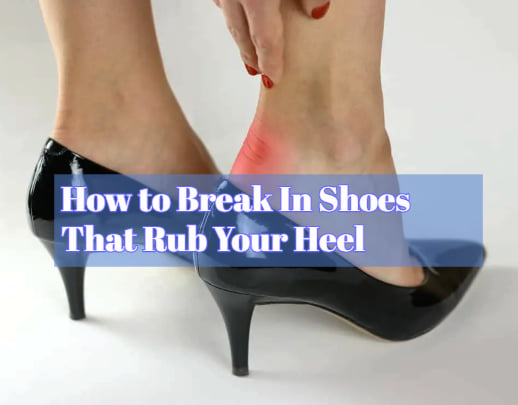
Why Do New Shoes Rub the Back of Your Heel?
Before diving into solutions, let’s look at why new shoes cause heel rubbing in the first place. There are a few common culprits:
The shoes are too stiff. Brand new footwear hasn’t been worn enough to soften and mold to your foot shape. Stiff leather, rubber soles or heavy stitching presses into the tender heel area.
The fit isn’t quite right. Shoes that are slightly too big can allow your foot to slide and create friction at the heel. Too-narrow shoes cram your foot in uncomfortably.
The backing isn’t smooth. Some shoes have a rigid heel counter or seams that dig into the heel. An inner lining with rough stitching or edges can also irritate.
Your socks are an issue. Low socks with seams around the heel can rub. Going barefoot in shoes allows even more friction against your skin.
Your feet aren’t used to them. Switching from flats to pumps or boots with a taller heel puts more pressure on unaccustomed parts of your foot as you walk. This takes adjusting.
Now that you know why new shoes cause heel rubbing, let’s get to the solutions. Here are 10 simple tricks to break in shoes for a comfortable, blister-free fit.
How to Break In Shoes to Stop Heel Rub
When new shoes assault your heels, fight back with these 11 hacks to break them in fast and pain-free:
1. Stretch the Shoes Before Wearing
One of the easiest ways to break in stiff new shoes is to manually stretch them a bit first. This helps the material give and flex to mould to your foot for a smoother fit.
Here are some easy DIY stretching methods to try:
- For leather shoes, stuff them with damp towels overnight. The moisture softens the material.
- Fill plastic bags with water and freeze them. Then place the icy bags inside tight shoes to subtly expand them.
- Use a shoe stretcher tool designed to widen shoes and add space in uncomfortable areas. Turn the dials to gently stretch the leather or fabric.
- Spray the inside of the shoe with leather conditioner or rubbing alcohol. This makes the material more flexible overall.
Don’t overdo the stretching – you don’t want shoes to end up too big and sloppy. Just help them along enough to remove pinching and friction at the heel.
2. Wear the Shoes Briefly at Home
Take the shoes for a test walk around the house before venturing out in public. Wear them for short periods, like 15-30 minutes at a time, on carpet.
Walk normally; don’t just stand around in them. The movement and friction from walking will start molding the shoes to your feet.
After a few sessions wearing the shoes at home, the materials should soften and flex to your foot shape. This cuts down on heel rubbing when you eventually take them outside.
3. Try Different Socks
What socks you wear can reduce – or increase! – heel rubbing in new shoes. Test out different styles to see what works best.
Thick, cushioned socks provide an extra barrier and padding between your foot and the shoe backing. This minimizes friction.
But beware socks with bulky seams around the heel that could cause even more irritation. Seamless athletic socks are ideal.
You can also apply moleskin, bandages or gel heel cushions directly on your skin at friction points before putting socks on.
4. Use Petroleum Jelly
An old trick for breaking in stiff shoes is to coat the inside edges with petroleum jelly. Rub a thin layer along the top rim, heel, and any seams or stitching that rub your feet.
The jelly acts as a lubricant, minimizing friction between the shoe and your skin. It also conditions and softens the material a bit as you break the shoes in.
Reapply after a few wears as needed until the heel moves smoothly without catching.
5. Consider Heel Grips
Heel grips and inserts are another option to shield your heel from painful rubbing in new shoes. These adhesive pads stick directly onto the back of the shoe.
Look for heel grips made of gel, foam or soft fabric. The extra cushioning prevents your heel from directly hitting the stiff backing.
Heel inserts also keep your foot from sliding up and down, eliminating friction. Opt for pads that wrap around the sides of the heel too for even more protection.
6. Ask Your Shoemaker for Help
For expensive or specialty shoes like leather boots, it pays to ask the experts for help breaking them in. See if the shoemaker offers adjustments to make the heel fit your foot better.
A cobbler can stretch tight spots or seams in the heel area by heating and manipulating the material. They may also be able to pad or smooth rough edges digging into your heel.
If you purchased the shoes at a boutique, ask if they offer in-house stretching services. Some stores will do this for free to ensure proper fit.
7. Use a Softening Spray
Special shoe-stretch sprays can expedite the breaking-in process by softening leather or canvas. The chemicals relax the fibers to make materials more flexible and pliable overall.
Spray it into tight spots and liberally coat the lining and heel backing. Let it soak in for 5-10 minutes before wearing.
Use shoe stretch spray a few times while breaking in shoes to continually ease stiffness and friction. It also moisturizes the leather to prevent cracking.
8. Try a DIY Heel Cushion
You can quickly make your own heel cushions without buying products. Cut a piece of soft fabric or moleskin to fit snugly around the back of the shoe heel.
Use puffy material like felt, fleece or a blister pad. Secure it in place with double-sided tape or fabric glue.
The custom cushion creates a protective barrier between the shoe backing and your heel. Refine the size and shape as needed until it prevents rubbing.
9. Wear Bandages at Irritated Spots
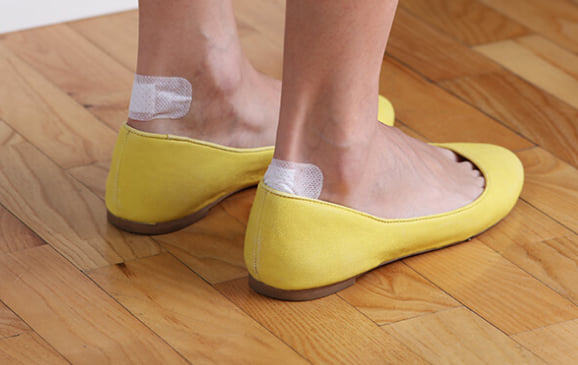
If a new pair of shoes rubs your heel raw, protect the area with bandages or blister pads until it heals.
Make sure to apply them thickly over the exact spot being irritated. As the shoes continue breaking in, you’ll be able to stop using the bandages.
Change them frequently and keep the area clean and moisturized so it can heal. Once your heel recovers, the shoes should be more comfortable.
10. Use a Wood Shaper
A shoe shaper is a wedge-shaped tool that stretches the heel collar and forms the back to fit your foot.
- Wedge heel area outward with the wide end of the shaper inside your shoes for 1-2 hours.
- For stubborn leather shoes, bang shaper against the ground to pulverize the fibres. Ah, sweet catharsis!
- Repeat process 3-4 times until the heel section has relaxed. Don’t overdo it or the counter will get too floppy.
This worldwide cobbler trick pushes past the break-in barrier quickly and painlessly. Shoe shaping ftw!
11. Return or Resell the Shoes
Sometimes, despite your best efforts, a pair of shoes just won’t stop rubbing your heels raw. The shape may simply be incompatible with your feet.
In this case, don’t force it. Return or resell the shoes and find a pair with a better heel fit. There are so many styles out there – don’t waste time battling shoes that hurt your feet.
Look for brands noted for good heel cushioning when selecting a replacement. And shop later in the day when your feet are slightly swollen to ensure the best fit.
Risks of Developing Blisters and Calluses from Heel Rubbing
It’s important to break in ill-fitting shoes quickly before heel rubbing leads to wounds or permanent damage. Here are some of the common risks:
Blisters – Fluid-filled sores caused by friction. They are vulnerable to bursting and infection.
Calluses – Thick, hardened skin that develops as a response to constant rubbing. They can become painfully cracked.
Bruising – Burst capillaries under the skin surface cause tender, discolored areas.
Scarring – In severe cases, the constant abrasion damages the dermal tissue and leaves scars.
Altered gait – You may unconsciously start walking differently to avoid pain, leading to problems.
Don’t just grin and bear persistent heel rubbing. Take proactive steps to break in shoes properly and avoid short-term pain and long-term foot damage.
Breaking in Heels: A Slow Process
The techniques above work well for sneakers, boots and other everyday shoes. But extra patience is required when breaking in high heels.
Heels put intense pressure on the heel area, so friction and rubbing is magnified. Don’t just shove your feet into sky-high stilettos!
Wear heels of any height for very short periods around the house at first. Use cushioning products and take them off immediately if you feel rubbing.
Gradually work up from 30 minutes to several hours as they adjust to your feet. Expect a longer breaking-in period of several wears.
Looking stylish shouldn’t mean suffering through blisters and calluses. Use these tips to stop new shoes from rubbing your heels raw! With some TLC, you can mold stiff shoes into the perfect custom fit.
Frequently Asked Questions About Breaking in Shoes That Rub
What materials cause the most heel rubbing when breaking in shoes?
Leather and stiff fabrics like canvas tend to cause the most heel rubbing when breaking in new shoes. The materials are less flexible and forgiving compared to suede or mesh shoes. Sturdy stitching and boot details like buckles also commonly irritate the heel until worn in.
How long does it take to fully break in shoes?
It depends on the shoe material and construction, but expect at least 3-5 full wears for most shoes to fully break in. Leather shoes and stiff boots take longer – up to 10-15 wears. Give new heels 20-30 short wears at home to break in properly.
Can I use alcohol or soap to soften shoes?
A small amount of rubbing alcohol can be used to soften and stretch leather shoes. Avoid excess alcohol so it doesn’t damage or dry out the material. Mild soap and water will soften suede and fabric shoes slightly, but avoid making them too soggy.
Should socks be thick or thin when breaking in shoes?
For reducing heel rub, use thicker padded socks rather than thin ones to provide cushioning. But if the shoes start feeling too tight overall, try thinner socks so your foot fits better during the break-in period.
Can breaking in shoes cause permanent damage?
If ill-fitting shoes aren’t broken in properly, extended friction and rubbing can potentially cause blisters, calluses, corns and misaligned toes over time. Listen to your body and stop wearing shoes that still hurt after the break-in period.
Can I stretch shoes too much when breaking them in?
It’s possible to over-stretch shoes, causing them to become loose and sloppy over time. Use moderate stretching techniques intermittently rather than forcing shoes aggressively wider. Shoes will naturally give a bit as you break them in.
What do I do if the heel backing folds down when I wear them?
Check that the shoes aren’t too big overall, allowing your foot to slide forward. If so, try sizing down. You can also temporarily use heel inserts or taping to keep your foot from sliding down. The shoes should mold better after break-in.
Why do my heels get rubbed on one foot but not the other?
Heels commonly rub unevenly if one foot is slightly larger or shaped differently. Opt for shoes with removable insoles and add extra cushioning to the heel of the problem foot. Wider shoe sizes can also help accommodate asymmetry.
How can I soften leather boots quickly to prevent heel rub?
For quick leather softening, try stuffing damp towels inside the boots overnight, or use a hairdryer to blow hot air into them periodically. Wear them with thick socks around the house for short stints to accelerate forming to your feet.

